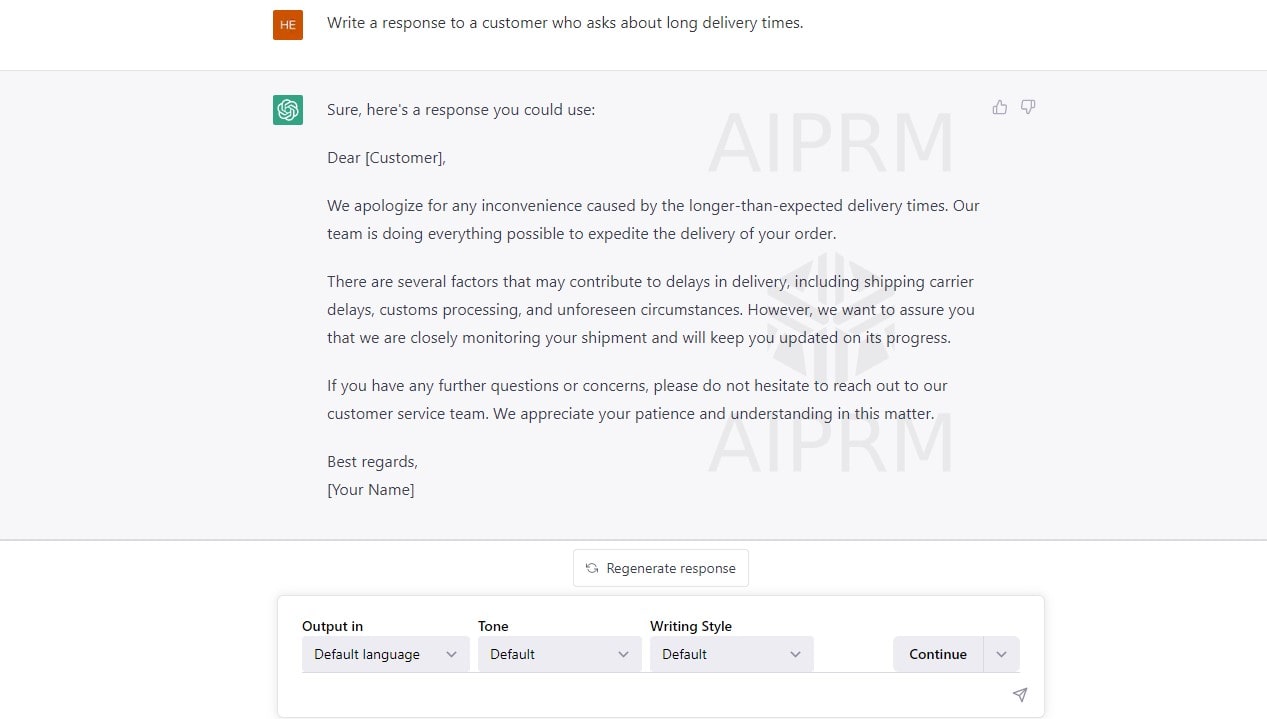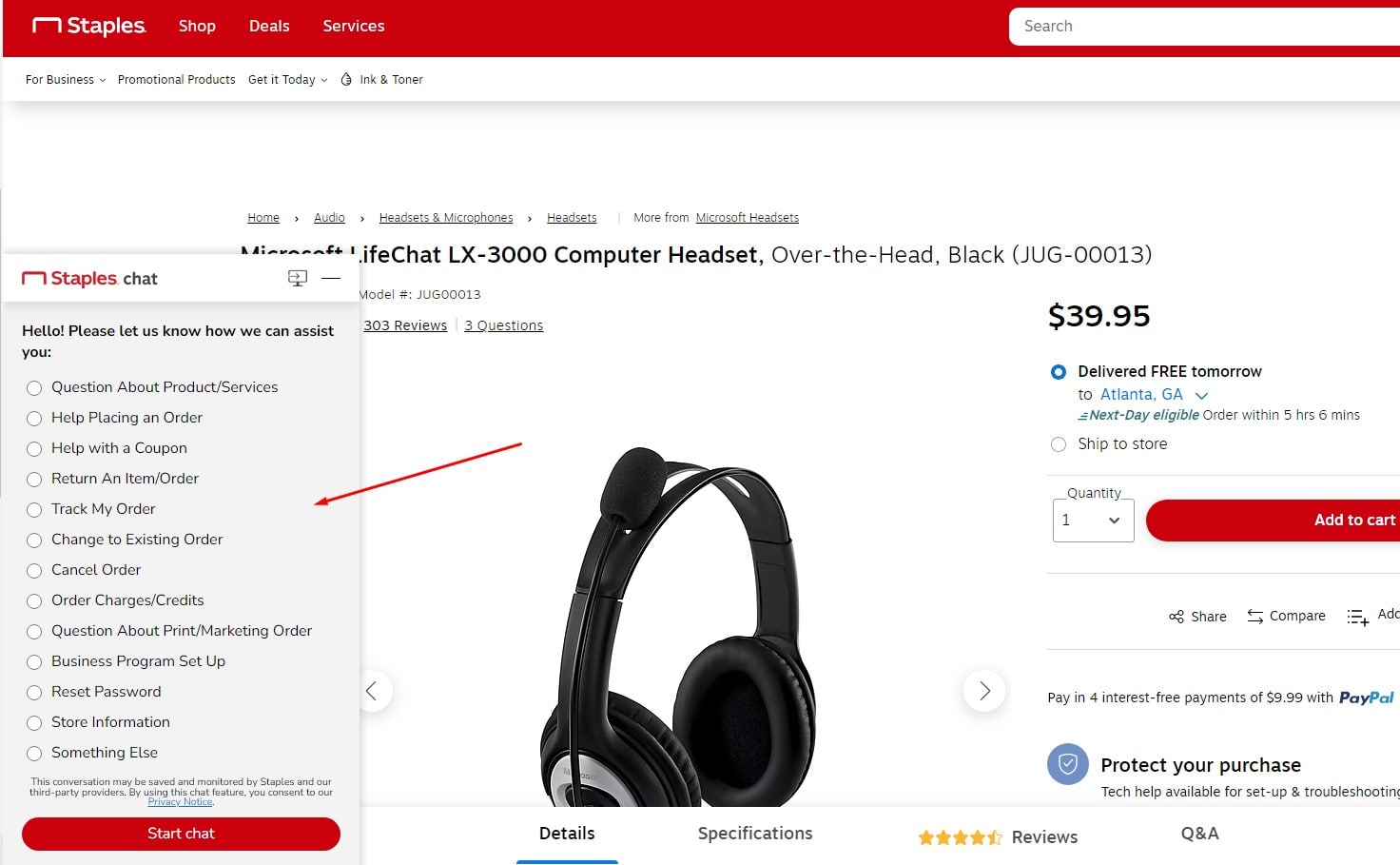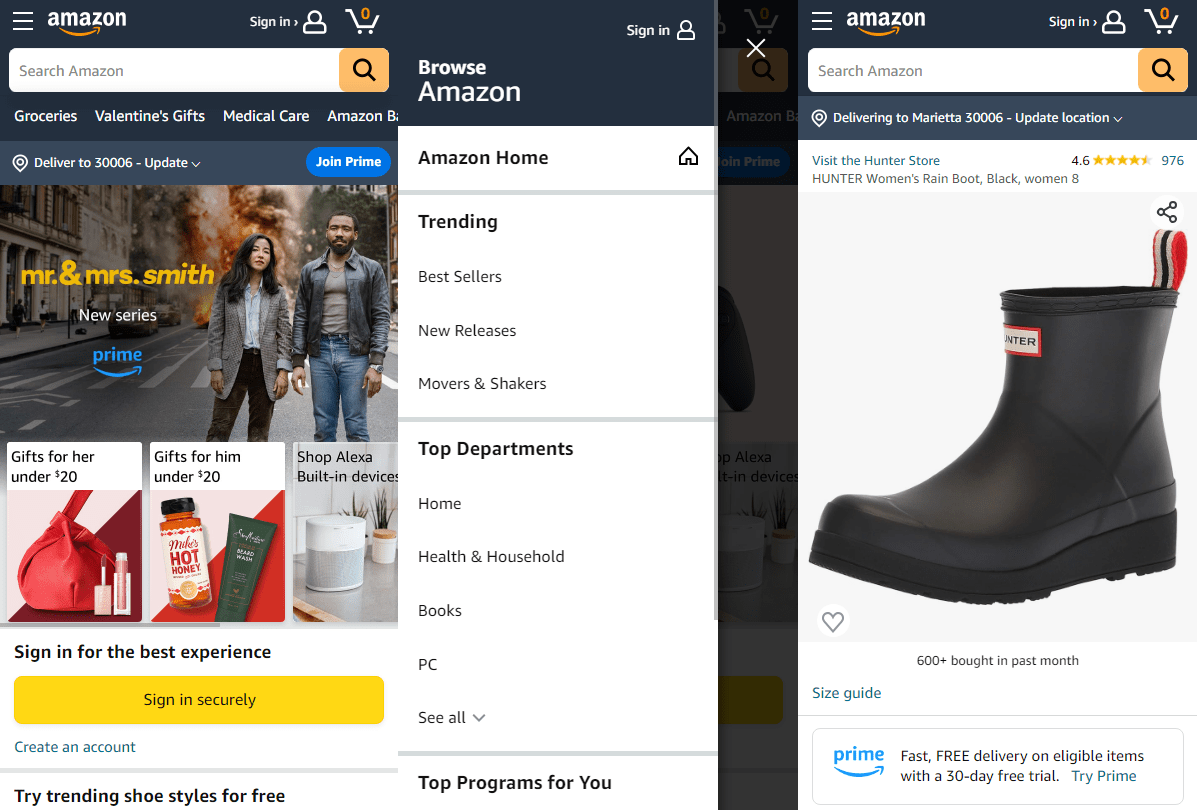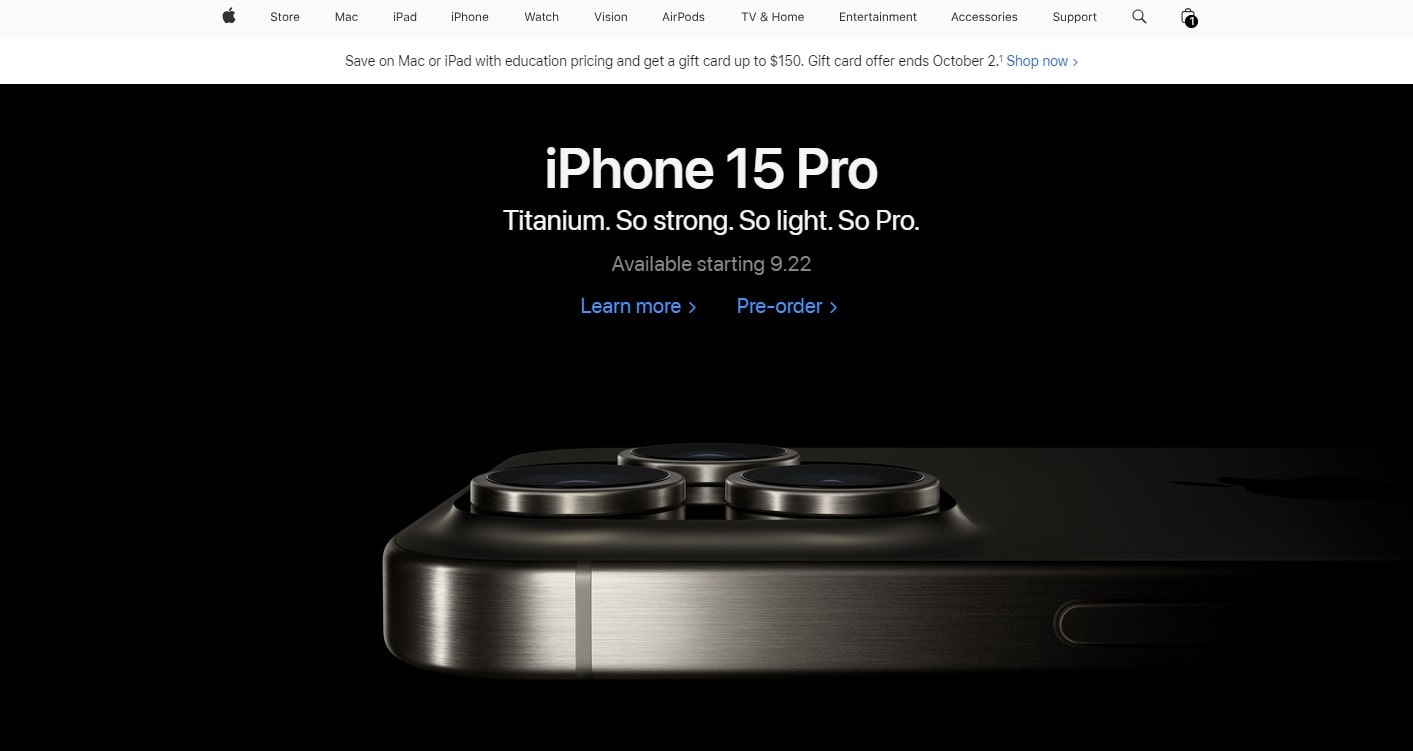Imagine a world where shopping carts fly, and credit cards chat – welcome to the whimsical future of e-commerce in 2024! In this ever-evolving digital marketplace, trends shift faster than a quick swipe on a smartphone. From augmented realities that bring products to life to voice searches that understand your midnight snack cravings, ecommerce is not just changing; it’s leaping into a new era of consumer engagement. Amidst these exciting developments, Plerdy stands as a beacon of insight and innovation, guiding businesses through the labyrinth of digital transformation. In this article, we dive into the top 10 ecommerce trends set to redefine shopping as we know it. Stay tuned to discover how these trends can catapult your business into the heart of modern commerce.

Augmented Reality in Online Shopping
Imagine wearing sunglasses or visualizing a new sofa in your living room without leaving your home. Augmented Reality (AR) in ecommerce is turning this sci-fi scenario into everyday reality, offering an immersive shopping experience that’s both engaging and informative.
Impact on Customer Decision-Making
AR technology is revolutionizing customer decision-making in online shopping. By providing a realistic view of products in a virtual environment, AR helps reduce the uncertainty often accompanying online purchases. Customers can “try before they buy,” leading to increased confidence in their choices and reducing the likelihood of returns.
AR Technology Advancements: The advancements in AR technology have been pivotal. High-quality graphics and interactive features allow customers to see products in fine detail. Brands are leveraging AR to offer virtual try-ons, 3D product views, and interactive manuals, making shopping convenient and an adventure.
Examples in Current Ecommerce
Leading ecommerce platforms are rapidly adopting AR. For example, IKEA’s AR app lets customers visualize furniture in their space, while Sephora’s Virtual Artist app allows users to try makeup virtually. These applications enhance customer experience and set a new standard in online retail.
AR in online shopping is not just a trend; it’s a game-changer. It connects the digital and physical worlds, giving customers an entertaining and useful purchasing experience. AR technology will enable more creative and interactive retail experiences. It’s an exciting time for ecommerce, with AR leading the charge in transforming how we shop online. For a deeper understanding of AR’s impact, check out this insightful article from Forbes on the future of AR in retail.
Ecommerce Customer Experience with Voice Search

“Hey, find me the best wireless headphones.” This command highlights the increasing integration of voice search in ecommerce, a development significantly enhancing the shopping experience for customers. As voice-activated devices become more prevalent in homes, optimizing ecommerce platforms for voice search has shifted from a luxury to a necessity.
AI and Customer Interaction in Ecommerce
Voice search in ecommerce relies extensively on AI to process and understand natural language, making the customer experience smoother and more intuitive. AI’s proficiency in interpreting varied speech patterns and contexts leads to more accurate and tailored customer search results. Ecommerce enterprises need this seamless integration to improve their voice search rankings and stay relevant in the digital market.
Voice Search’s Role in Ecommerce and Customer Engagement
The surge in voice search usage necessitates altering ecommerce strategies, particularly in tailoring content to customers’ conversational language. Incorporating ‘long-tail keywords’ into ecommerce content is more likely to align with customer voice searches. Grasping this shift in SEO strategy is critical for ecommerce businesses aiming to maintain a competitive edge in voice search rankings and enhance customer interaction.
Ecommerce and Future Trends in Customer Search Behavior
The future trajectory of voice search indicates its burgeoning role as a primary search mode, shaping how customers interact with ecommerce platforms. Ecommerce businesses must, therefore, continuously adapt their strategies to align with these evolving customer preferences in voice search usage.
In conclusion, voice search optimization is revolutionizing the ecommerce industry, primarily by altering customers’ shopping behavior. Embracing this emerging trend is crucial for ecommerce businesses to ensure they are heard by customers and effectively found. Search Engine Journal provides detailed tips on optimizing ecommerce systems for voice search to improve customer experience.
AI and Personalized Shopping

In ecommerce, Artificial Intelligence (AI) is like a skilled artisan, meticulously crafting personalized shopping experiences for each customer. Gone are the days of one-size-fits-all marketing; AI’s precision and adaptability have ushered in an era of individualized customer journeys.
Benefits of Personalization
Personalized shopping experiences aren’t just pleasant surprises for customers; they are potent tools for boosting sales and customer loyalty. Customizing product recommendations and content to individual interests and habits can boost engagement and conversion rates. Powered by AI, personalization transforms casual browsing into targeted shopping experiences that resonate with each customer.
AI in Customer Analysis
AI excels in analyzing vast amounts of customer data, from past purchases to browsing habits. This analysis enables businesses to understand their customers deeply and predict future needs and preferences. By leveraging this intelligence, ecommerce platforms can offer highly relevant product suggestions and customized content, leading to more successful sales and satisfied customers.
Real-world Implementations
Major ecommerce players like Amazon and Netflix have set benchmarks in AI-driven personalization. Amazon’s recommendation engine and Netflix’s tailored content feeds demonstrate AI’s capacity to improve user experience and retention.
AI’s role in personalized shopping is not just transformative; it’s revolutionary. AI will become better at creating sophisticated and productive purchasing experiences. Ecommerce companies must use AI for personalization to be competitive. To delve deeper into AI’s impact on personalization, consider reading insightful articles from McKinsey & Company on AI’s evolving role in marketing and customer experience.
Emergence of Conversational Commerce

Welcome to the era where your shopping experience talks back! Conversational commerce is revolutionizing the ecommerce landscape, turning every customer interaction into a personalized conversation.
Chatbot Technology
In this digital age, eCommerce chatbots are the new sales assistants. Equipped with advanced AI, they can handle many customer queries, from tracking orders to product recommendations, 24/7. This technology improves customer experience and streamlines operations, letting organizations focus on more difficult tasks.
Impact on Sales
Conversational commerce has a significant impact on sales. Engaging customers through their preferred channels, like messaging apps or voice assistants, creates a seamless and personalized shopping journey. This convenience often translates to increased customer satisfaction and loyalty, driving sales upwards.
Future Trends
The future of conversational commerce holds immense possibilities. With AI and machine learning advancements, chatbots are expected to become more intuitive, offering more personalized and complex interactions. This evolution further blurs the lines between online shopping and physical retail experiences.
Conversational commerce changes how organizations connect with customers; it’s not just a trend. It’s about creating a dialogue that is both engaging and efficient. As technology advances, conversational commerce will become an increasingly vital component of successful ecommerce strategies. Forbes and Harvard Business Review can illuminate conversational commerce.
The Rise of Mobile Commerce

In the bustling world of ecommerce, mobile commerce has swiftly taken center stage, turning smartphones into virtual shopping malls. As we see a growing trend of consumers favoring their mobile devices for shopping, the importance of optimizing for mobile commerce has never been more pronounced.
Mobile Payment Innovations
Innovations in mobile payment solutions, such as digital wallets and one-click payments, are driving the growth of mobile commerce. These convenient payment methods enhance the shopping experience and increase the likelihood of impulse purchases and repeat business.
Mobile UX/UI Trends
Mobile platforms’ user experience (UX) and user interface (UI) are critical in retaining customers. A seamless, intuitive, and engaging mobile UX/UI design ensures that customers can navigate easily, find products quickly, and complete purchases without hassle, contributing significantly to the success of mobile commerce.
Case Studies
Amazon and eBay’s user-friendly apps demonstrate mobile commerce’s success. These platforms have seen a surge in mobile transactions thanks to their focus on streamlining the shopping process and making it as effortless as possible for the user.
The rise of mobile commerce is reshaping the ecommerce landscape. It’s about more than just convenience; it’s about creating an engaging and efficient shopping environment in the palm of your hand. Mobile commerce has limitless development potential as mobile technology advances. For deeper insights into the latest trends in mobile commerce, resources like eMarketer or Statista offer valuable information and statistics.
Multi-channel and Social Media Integration

The digital age has transformed shopping from a mere transaction into a multi-channel journey. Integrating ecommerce with various channels, especially social media, is no longer a luxury but a necessity for businesses aiming to thrive in today’s competitive market.
Social Media Shopping Features
Social media platforms have evolved into vibrant marketplaces. Features like Instagram’s shopping tags and Facebook’s marketplace enable direct purchases within these platforms, simplifying the path to purchase. This integration not only boosts sales but also enhances brand visibility and engagement.
Omnichannel Retailing
The essence of omnichannel retailing lies in providing a seamless shopping experience across all platforms, whether online, in-app, or in-store. This approach ensures consistency in customer experience, fostering brand loyalty and customer retention. It’s about meeting customers where they are and offering them a cohesive experience, irrespective of the channel.
Success Stories
Businesses like Target and Nike have successfully leveraged omnichannel strategies, seamlessly integrating online and offline experiences. Their ability to synchronize inventory, pricing, and customer data across channels has set a benchmark in the industry.
Integrating multi-channel and social media in ecommerce represents a paradigm shift in how businesses approach sales and customer engagement. It’s about creating a unified brand presence across diverse platforms, ensuring customers receive a consistent and engaging shopping experience, no matter where they interact with your brand. Seek advice from Shopify’s blog or Hootsuite on social media and multi-channel integration.
Sustainability in Ecommerce

In an age when climate change is more than a buzzword, ecommerce sustainability is essential. Consumers are increasingly aligning their spending with environmental values, making green practices essential for businesses.
Consumer Trends Towards Sustainability
Modern consumers are eco-conscious, often favoring products and brands that demonstrate environmental responsibility. This change in consumer behavior encourages enterprises to use biodegradable packaging and ethically sourced items. By aligning with these values, businesses appeal to a growing demographic and contribute to a healthier planet.
Sustainable Practices in Ecommerce
Ecommerce has the unique opportunity to lead in sustainability. Measures like reducing packaging waste, optimizing supply chains for lower carbon footprints, and offering eco-friendly products are becoming standard practices. Brands like Patagonia and Allbirds exemplify this trend, integrating sustainability into their core business strategies.
Brand Case Studies
Case studies of companies like Lush and The Body Shop, which have long embraced sustainable practices, illustrate the positive impact on the environment and business performance. Their commitment to sustainability has garnered a loyal customer base and set them apart in a crowded marketplace.
Sustainability in ecommerce is an evolving journey, not just a destination. It’s about making conscious choices that benefit both the planet and the bottom line. As the ecommerce landscape continues to grow, integrating sustainability will become increasingly vital. For further insights and statistics on sustainability in ecommerce, resources like the Business for Social Responsibility (BSR) or the Environmental Protection Agency (EPA) provide valuable information.
Subscription Models and Customer Loyalty

The ecommerce world is witnessing a paradigm shift with the rise of subscription models, a strategy redefining customer loyalty and consistent revenue streams. This model isn’t just a transaction; it’s about forging lasting customer relationships.
Benefits of Subscriptions
Subscription services offer a win-win scenario. For customers, they provide convenience, often with personalized experiences, and for businesses, they ensure predictable revenue and deeper customer insights. This model encourages repeated interactions, enhancing customer loyalty and providing businesses with a steady income.
Subscription Model Examples
Successful examples of subscription models abound. Services like Dollar Shave Club and Birchbox have revolutionized how consumers purchase grooming products and cosmetics. Their success lies in understanding customer needs and delivering consistent, personalized value, fostering strong brand loyalty.
Building Loyalty through Subscriptions
The key to building loyalty through subscriptions is personalization. Customers stay subscribed because they feel valued and understood. Brands that excel in tailoring their offerings to individual preferences and excellent customer service tend to have higher retention rates.
Subscription models in ecommerce represent more than just recurring transactions; they symbolize a commitment to customer satisfaction and long-term engagement. Businesses that use subscriptions well will likely prosper and gain client loyalty as this trend continues. For further exploration into how subscription models impact customer loyalty, Harvard Business Review and Forbes offer insightful analyses and case studies.
Advanced Analytics and Data-Driven Strategies

In the digital marketplace, data is the new currency. Advanced analytics and data-driven strategies are pivotal in navigating the competitive landscape of ecommerce. They’re not just tools but the compass guiding businesses toward informed decision-making and strategic planning.
Role of Big Data
In the vast sea of ecommerce, big data acts as a lighthouse, illuminating customer behaviors, market trends, and operational efficiencies. By harnessing big data, businesses can uncover patterns and insights that lead to more targeted marketing, optimized customer experiences, and improved product offerings.
Analytics Tools and Techniques
Using sophisticated analytics tools and techniques is critical for translating data into actionable strategies. Tools like Google Analytics, SEMrush, or Adobe Analytics offer comprehensive insights into customer journeys, website performance, and marketing effectiveness. These insights help firms improve strategy, consumer engagement, and growth.
Success Stories
Companies like Amazon and Netflix are exemplary in their use of data analytics. Amazon’s recommendation algorithms and Netflix’s content personalization strategies are driven by deep data analysis, resulting in enhanced customer satisfaction and loyalty.
Integrating advanced analytics and data-driven strategies is essential for any ecommerce business aiming to thrive in today’s market. It’s about making informed choices based on a thorough understanding of data, which leads to smarter business decisions and sustainable growth. For more in-depth knowledge on how analytics shape ecommerce strategies, resources like the Journal of Business Analytics or the MIT Sloan Management Review provide valuable insights and case studies.
Emerging Payment Technologies

The ecommerce world is standing on the brink of a payment revolution. Emerging payment technologies are reshaping the checkout experience, offering speed, security, and convenience like never before. This evolution is not just about paying differently but enhancing the entire shopping journey.
Cryptocurrency in Ecommerce
Cryptocurrency is gradually carving its niche in ecommerce. Its decentralized nature offers a level of security and anonymity appealing to both businesses and consumers. Companies like Overstock have already started accepting cryptocurrencies, heralding a new era of digital transactions in ecommerce.
Digital Wallet Usage
Apple Pay and Google Wallet are standard online wallets. They simplify the payment process, allowing for quicker checkout experiences. This convenience improves customer satisfaction and increases conversion rates for businesses.
Future of Ecommerce Payments
The future of ecommerce payments is poised to be more integrated and user-centric. Innovations like biometric authentication for payments and the integration of AI for fraud detection are on the rise. These advancements are set to offer more secure, efficient, and personalized payment experiences.
The incorporation of emerging payment technologies in ecommerce is a game-changer. Keeping up with technology advancements is essential for organizations to be competitive and relevant. For further insights into the impact of emerging payment technologies on ecommerce, authoritative sources like Forbes or the Financial Times offer in-depth analyses and updates.
Conclusion
As we conclude this journey through the 2024 ecommerce trends, remember that the digital marketplace is constantly evolving. Embracing these trends isn’t just about staying current; it’s about setting the pace for future success. The insights provided here are just the beginning. If you’re intrigued by the potential of these trends, delve deeper into our other articles on Plerdy’s blog. Each piece is a treasure trove of knowledge, guiding you through the ever-changing ecommerce landscape. And remember, for effective website analytics and heatmaps to track your ecommerce success, Plerdy is the tool you need. Stay ahead of the curve – explore, implement, and thrive with Plerdy.
